Last-gen revisited: Far Cry 4
Pushed beyond their limits?
Did last-gen simply run out of steam? Xbox 360 launched in 2005, with its successor taking eight years to arrive - three years longer than the console lifecycle established by the first two PlayStations. Artificially extended due to rising software development costs and the urge for Sony and Microsoft to maximise profits from hardware sales, the prolonged life of these consoles was both a blessing and a curse. On the one hand, the need to upgrade was staved off, but on the other, there was undoubtedly the sense that these machines were hitting their limits in their twilight years. Far Cry 3 is a perfect example - a game that wowed with its scale and ambition, held back by its rather wobbly performance on console. This year's instalment emphasises the wall developers hit - Far Cry 4 is bigger and better than its predecessor, but the problems faced by its predecessor on last-gen console are just as pronounced, if not more so.
Ubisoft's latest Dunia engine-powered magnum opus is simply beautiful on Xbox One, PS4 and PC. Could it be that the latest iterations of the tech were always designed with next-gen architecture in mind? Triple-A games take years to develop, and nobody quite knew when the 360 and PS3 replacements were going to arrive - developers had to hedge their bets. Far Cry 3 was a world apart on PC compared to its console incarnations, while Battlefield 3 - its Frostbite 2 engine designed around DirectX 11 and a many-core PC architecture - was clearly a next-gen warm-up project. Crystal Dynamics' Tomb Raider is another example of a title built with one eye towards the future of console hardware.
Last-gen scalability was built into all of the games, but the results were lacklustre compared to their PC versions - next-gen console proxies, if you will. Far Cry 3 arguably fared worst of all, bereft of the graphical bells and whistles, and blighted with horrible screen-tear, low frame-rates and muddy controller response issues. The core game was there, the performance wasn't. This begs the question - how much more compromise is built into the last-gen versions of Far Cry 4? Is it still worthwhile?
With this new sequel, the gap between last-gen consoles and the modern platforms is even wider - graphical standards have moved on, and the Dunia engine scales up beautifully to match the latest technology found in modern consoles and PC. New technologies such as HBAO+, soft shadows, and volumetric fog along with upgrades to the general lighting and materials systems are in place in the new game. Environment detail is greater too, providing a packed landscape that feels even more organic, although the amount of interactivity between players and the scenery is still limited - tress bend during an explosion but never break or become uprooted, as they do in Crysis 3, for example.
On Xbox 360 and PS3, detail levels are reduced, lighting is pared back, and various shader effects are missing entirely. The core artwork and modelling remains in place, and we are still looking at the same basic game design, but one that appears visually truncated compared to the vastly superior PS4 and Xbox One editions. Indeed, the core last-gen graphical feature set looks very, very similar to Far Cry 3's. While this doesn't come as a surprise, it's clear that some of the downgrades are now having a larger effect on gameplay.
While the nut and bolts of the core gameplay are retained, it's clear that the graphical downgrades diminish the immersive nature of the world Ubisoft has created here. On the modern platforms, there are moments where you can almost feel the wind chill as you scale up the snowy mountainous regions of Kyrat, while on Xbox 360 and PS3 your connection to the game world is never quite as strong. This difference is primarily cosmetic, but other changes have a more direct impact on gameplay. In particular the environment is less populated on last-gen systems. On the new systems, we frequently run into other vehicles driving across dirt roads, along with enemy patrols and random inhabitants going about their daily business, but on the 360 and PS3 we scarcely experience such encounters - the number of NPCs and vehicles present in the world is diminished and with it, the sense of the world's authenticity.



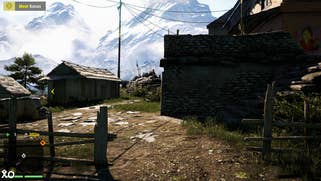
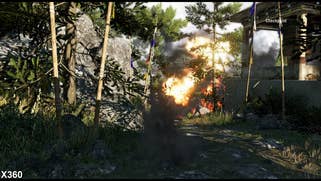

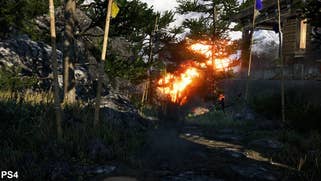
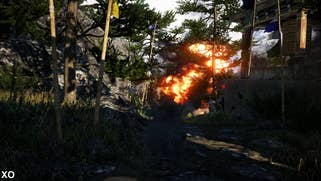
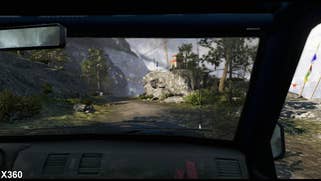

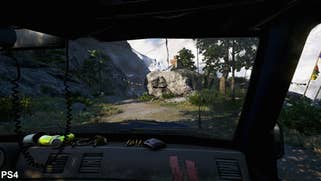
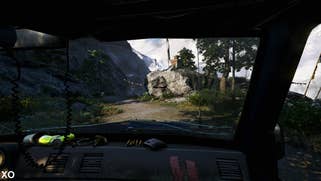


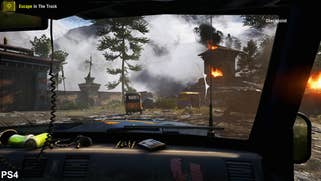


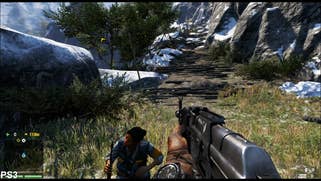














It's worth pointing out that Far Cry 4's core story missions appear to be replicated between platforms, but the incidental and random encounters that keeps things interesting are less apparent. However, the population of wildlife appears to be similar in numbers. So hunting down stray elephants, tracking wolves as they move through the trees or witnessing a rampaging rhino randomly attack an outpost are aspects of the game that remain present and correct on all versions of the game.
Ultimately, despite some gameplay successes, Far Cry 4 on Xbox 360 and PS3 suffers from the same problems as its predecessor. Performance is very similar, with near constant screen-tear and heavy frame-rate drops, creating a stuttering gameplay experience where controller response is highly variable, making it difficult to aim consistently during more heated action scenes. In comparison, the user interface on Xbox One and PS4 feels smooth and intuitive, allowing our concentration to fully focus on having fun in the game world.
The lack of improvement on the last-gen version between Far Cry 4 and its predecessor lends credibility to the notion that Ubisoft took the old hardware as far as it would go, given its multi-platform focus. However, we should also remember that the PS3 and Xbox 360 versions of the title would not have had the resources and manpower enjoyed by their current-gen counterparts. The future is all about driving forward more advanced experiences designed for the new wave of gaming hardware, so it makes little sense to make heavy investments in supporting consoles that have just celebrated their eighth and ninth birthdays.
Alternative comparisons:
Given the sheer age of the architecture that powers Xbox 360 and PS3, it's remarkable that games like Far Cry 4 are even possible on these machines, yet Ubisoft has managed to translate the same open world environments and gameplay relatively intact, albeit with a raft of major compromises and a heavy reliance on its existing tech. The experience may not shine like it does on the PS4 and Xbox One, but we'd say that if you enjoyed Far Cry 3 on the older consoles, the chances are that you'll get good value from the last-gen versions.
The Dunia engine manages to successfully scale across multiple platforms and generations, but the technology only really feels at home on the PS4, Xbox One and PC, where the massive boost in graphical power allows for levels of detail and advanced effects that truly allow you become immersed in the lush Himalayan environment on offer. There's a real sense that Far Cry 4 offers up the next-gen experience Ubisoft wanted to deliver with its predecessor, but couldn't owing to hardware constraints.
Free from the shackles of old technology, the Dunia engine finally flex its muscles in ways we've not seen before. Far Cry 3 was a beautiful title on PC, but this sequel takes the series onto a whole new level. However, it remains very much a more advanced iteration of an existing engine - a first-gen effort if you will. The new wave of consoles are now a known quantity, and we can't wait to see how the franchise evolves to get the most out of them.

















